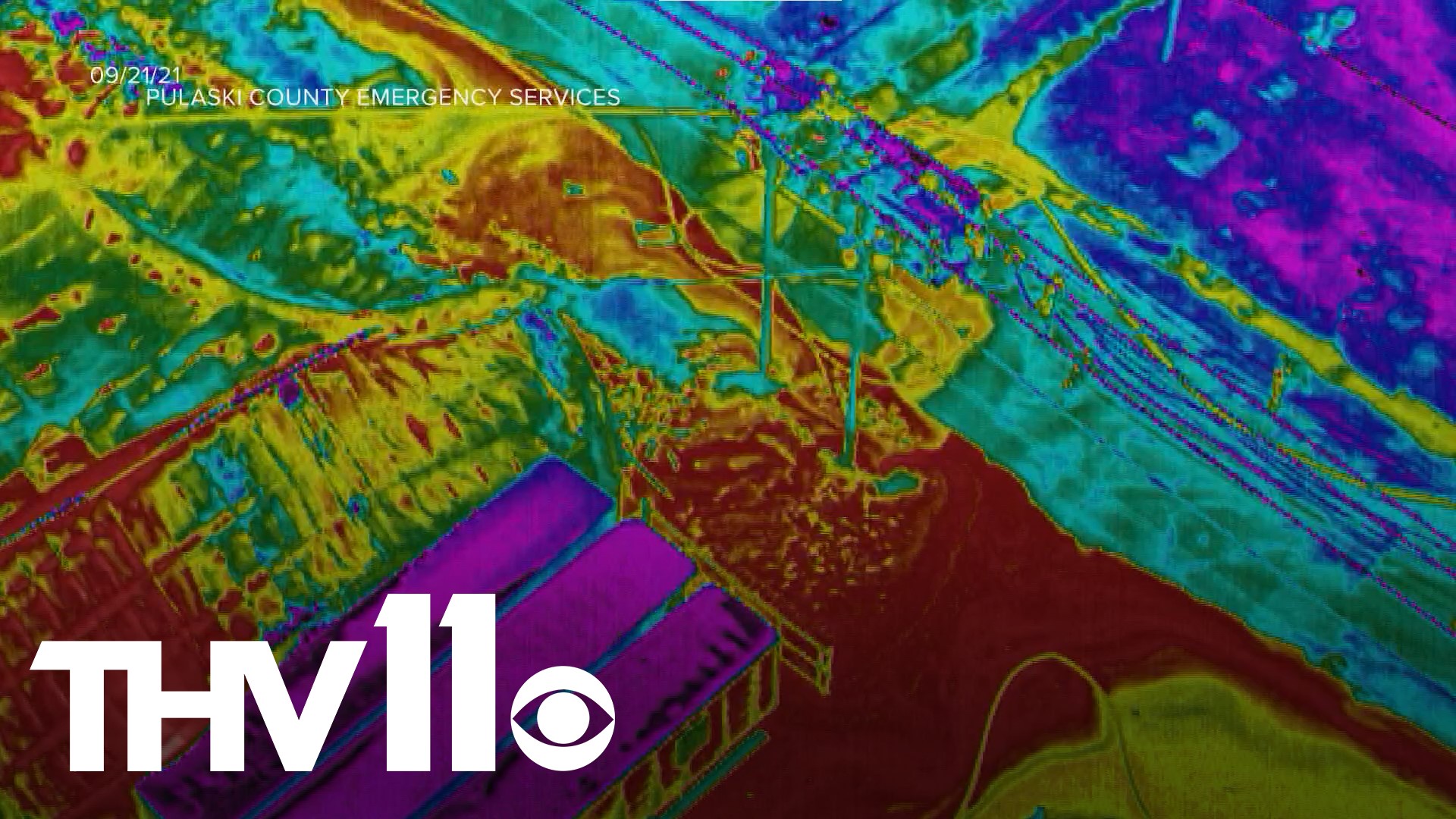LITTLE ROCK, Ark — As the sun set Tuesday, the ground at Goldman's recycling lit up.
More than half of the city's fire department worked to put out flames using hydrants, hoses, and thermal imaging.
"Anything that we can't see because of the smoke, that you can't see through regular eyesight you can look through the thermal imager," Little Rock Fire Captain, Bo Vest said.
Vest grabs his thermal indicator as soon as he gets to the scene: "It'll tell you where to go, where to direct your hose streams," Vest said, describing his thermal imaging tool.
A first step and a critical part in how firefighters do their jobs
But thermal imaging isn't just for fighting fires on the ground. In recent years a new eye in the sky helps put out flames fast.
"Whereas in the past you may have had to extend the ladder and send an individual over the top of an emergency scene, you're now eliminating that by sending a particular drone over that scene," Little Rock Fire Chief, Delephone Hubbard said.
That's exactly what happened Tuesday. Pulaski County Emergency Services received FAA clearance and flew their own thermal imaging drone 200 feet above the fire, helping crews quickly strategize.
"From the time the chief asked me to fly it to the time we were in the air, I would say it was less than 15 minutes," Pulaski County Emergency Services Drone Pilot, Jay Meeks said.
For the last two years it's been changing not just how LRFD approaches fires, but how other emergencies are handled as well.
"We use it for not only fires but searching for lost people. We do hazard material response" Andy Traffanstedt, Director of Emergency Management for Pulaski County said.
It's all for the same goal in mind: to keep people safe both on the ground and overhead.
"It's all about getting all of my firefighters to go home safe," Hubbard said. "So whatever resources we have to put in or look into to make sure that all of our firefighters are safe, that's what it's all about."

